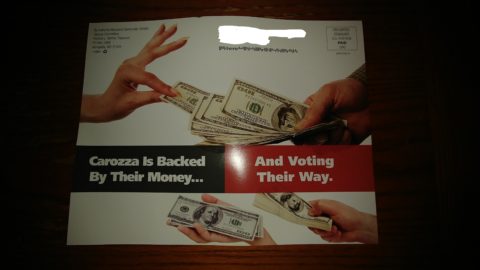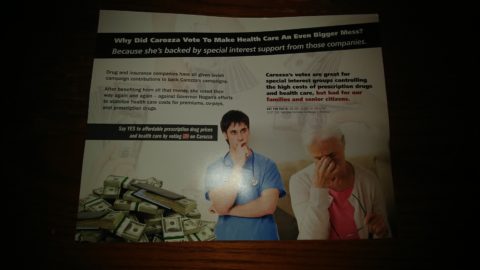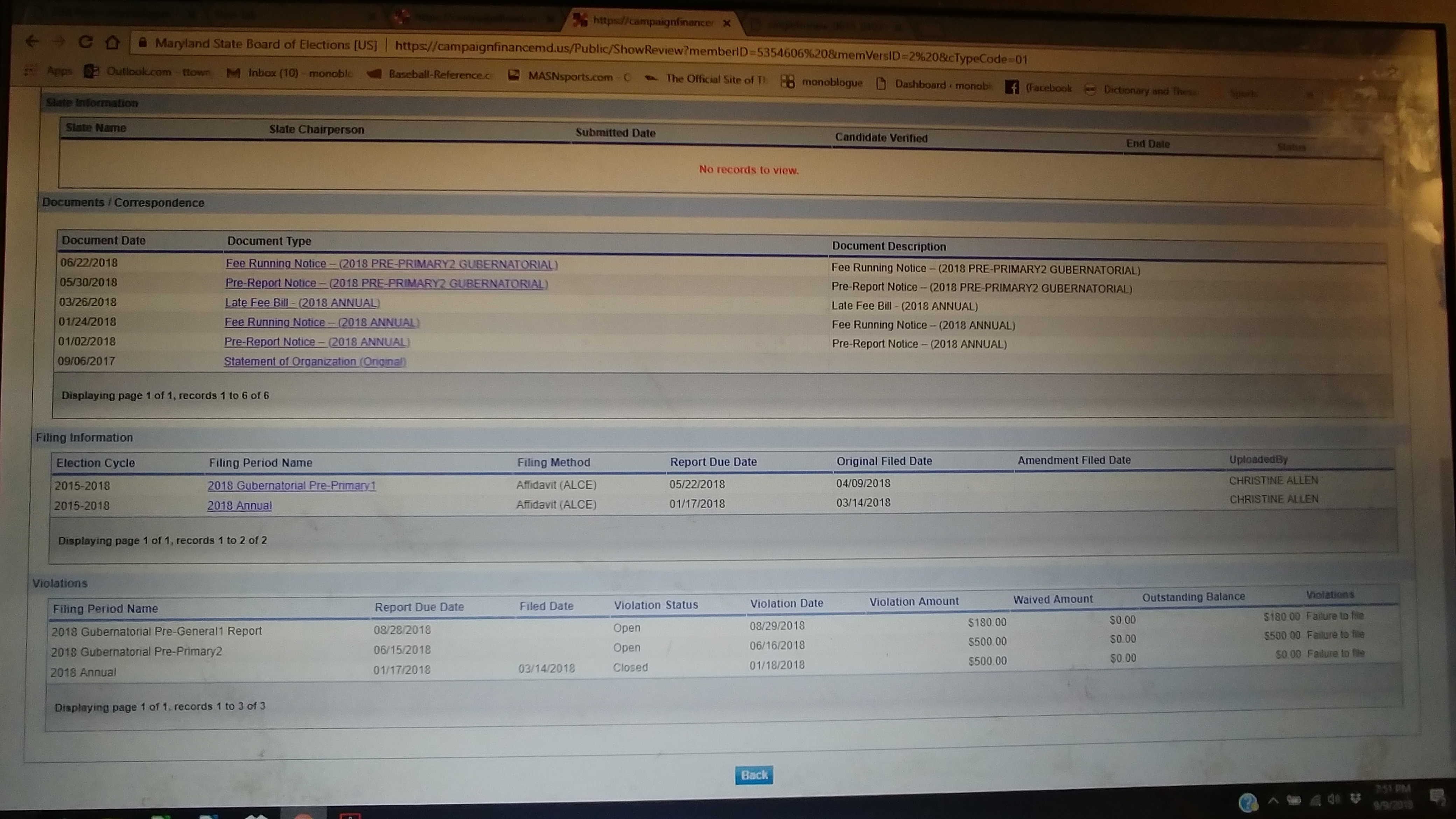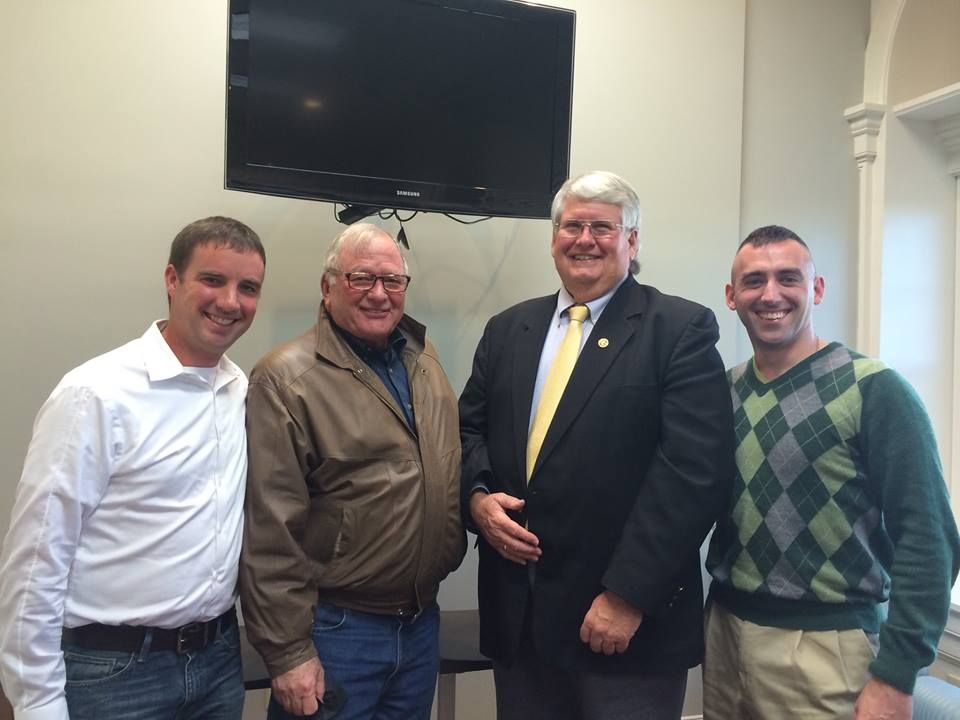This will be the pre-election edition of odds and ends. I have so much stuff in my e-mail that’s interesting and intriguing that I’ll end up doing two parts, with the less time-sensitive stuff coming later this week or maybe next, depending on my mood.
As always, these are items I can deal with in a span of words covering anywhere from a couple sentences to three or four paragraphs, give or take.
The media is not your friend
I get a lot of items that pick on the media, but none have said so more succinctly than The American Spectator‘s editor Melissa McKenzie. This wasn’t from a featured article, but an e-mail summary:
Whether Trump wins or loses, THEY’VE ALREADY LOST. Their industry is over. Their ideological hegemony is done. They are relics of a bygone era. The worst part is that they’ve done it to themselves. They’ve torched their credibility and manage to cover nothing of importance.
(…)
The insanity you’re seeing from the mainstream media is terror. They hate Donald Trump, but without him, they’re over. They’ve boxed themselves into a corner.
So while marveling about the MSM’s nuttiness, keep in mind that it’s not really about Trump. It’s about them. They’re experiencing existential dread. They’re right to be afraid.
“Trump: The End is NOT Nigh,” Melissa McKenzie, October 5, 2020.
To take the point further, Erick Erickson compared two styles of new media, pointing out the difference between Left and Right:
The difference is that the conservative sites are frequently just running pre-written PR pieces. The Acronym sites actually have reporters and editors, running as partisan news operations. They are actively digging dirt and churning stories to damage the GOP. Their efforts are not to facilitate truth, but to advance a leftwing narrative.
(…)
As an aside, conservatives need to take note on this. In the past, conservatives tried to do something similar to what Acronym is doing. Unfortunately, the donor structure on the right largely exists to make a profit and see a financial return on investment. Progressive donors want to affect change and see their return on investment based on narrative shaping and advancement of an agenda.
“A Tale of Two Stories With Common Facts,” Erick Erickson, October 19, 2020.
Back in the day I used to be one of those conservatives who knocked themselves out doing news reporting and commentary. Over the years I have worked with a bunch of news aggregators; here’s a list gleaned from my blog categories: Examiner.com, Conservative Weekly, Red County, Watchdog Wire, and Liberty Features Syndicate. Except for the pittance I made off the Examiner, these weren’t paying gigs because of what Erickson noted – these entities had to make a profit and could not with paid contributors. (The Examiner got less and less lucrative over time, too.)
But there is a market out there that’s being filled with videos and podcasts, and someone somewhere is making money for nothing, as Dire Straits would sing. That’s where people are going for news, and it’s driving the gatekeepers crazy.
The realms of money and mail in politics
Did you know that over 40 percent of Democrat donors are unemployed? That’s what a September story in PJ Media claimed. It was even more pronounced in 2020, as the number edged up over 50 percent.
I think there’s something wrong with the system when it’s being gamed in that way. But that’s nothing to how vote-by-mail seems to be manipulated: here’s a list of recent vote-by-mail disasters compiled by the fine folks at the Capital Research Center.
Then again, if you asked Rebecca Mansour and James P. Pinkerton at Breitbart, this is all part of a seven-part scheme to promote vote-by-mail “chaos.” Add in accusations of ballot harvesting, and, if the Russians’ goal was to sow distrust in our electoral system then the Left is helping them succeed beyond their wildest dreams.
All I know is that I’m going to go express my preferences on Tuesday, and hopefully the state and national voters agree. Let’s just say I won’t be supporting the ones who are the target of these allegations.
The coming unrest
As I’ve probably mentioned from time to time, I keep tabs on the Indivisible movement. While they have reached the late TEA Party stage of constantly begging for money, they also have their little schemes and one they recently hatched is called “Protect the Results.” (Why do I suspect the only results they are interested in protecting are the ones where they are winning?)
They claim that they “created a coalition of more than 100 organizations that are committed to protecting our democracy if Trump and his desperate Republican allies throw our country into a manufactured constitutional crisis.” If it takes until January to find the needed votes for Joe Biden Kamala Harris, they are willing to wait.
At the time I initially heard from them, they were up to 240 events nationwide (now it’s 471) but the one I’m most interested in is slated for Ocean City on November 4. (There are none in Delaware or elsewhere on the Eastern Shore.) Of course, the location is not released but we know the sponsor: “Join Indivisible Worcester MD to wave signs to honor the valid results of the 2020 election, ensure that every vote is counted, and show up to demand the peaceful transition of power. We’ll have some signs but not enough for everyone, so bring signs if you can.”
There are only so many outdoor locations in the Ocean City area where a crowd of a couple dozen would be noticed at this time of year, so be looking and if you see them ask them if they’ll accept a Trump victory.
One problem I have with Trump
There are a lot of things I’ve liked about Donald Trump, as I detailed yesterday. But one bone I have to pick with him is his energy policy – while he isn’t going to ban fracking like Joe Biden, he’s leaving a lot of chips on the table and one of those was his recent extension of an energy exploration ban in the Eastern Gulf and South Atlantic until 2032. We just finally got to energy independence, so why leave these potential assets to wither?
As API’s Mark Green opines:
Most concerning is the abrupt about-face for U.S. energy policy embodied in the president’s executive order. Suddenly shelving the vast oil and natural gas potential of the Eastern Gulf and South Atlantic, which would be critically important to the nation’s strategic energy needs, is a 180-degree shift from the U.S. “energy dominance” theme heard so often from the administration the past few years.
Mark Green, “The Administration’s Misstep On Eastern Gulf, South Atlantic Offshore Policy,” Energy Tomorrow, September 14, 2020.
We don’t know how much oil is down there, but without seismic testing and exploratory drilling, we won’t know if they are going to find dry holes or millions of barrels we can use. We should make the attempt to find out – not just in those areas but farther north where it can perhaps create jobs unlike the wind turbines no one but the moneyed interests want.
Misdirection
Charles “Sam” Faddis is a veteran intelligence operations officer, so I think he has a pretty informed opinion when he writes:
The Iranians have already begun sending spoof emails to potential voters seeking to sow dissension. The Russians may soon follow suit. Americans need to be on guard.
(…)
The same FBI that wants us to believe that Iranian spam is a serious threat to our democracy is the same FBI that has been sitting on Hunter Biden’s laptop for ten months. That laptop is filled with evidence of what appears to be a worldwide operation by the Biden family to cash in on Joe Biden’s position as Vice-President and then as former Vice-President. It is also filled with evidence to suggest very strongly that Joe Biden – the Democratic Party candidate for President – looks like he may be bought and paid for by Beijing.
Charles Faddis, “Are The Chinese One Step Away From Putting Their Man In The White House While The FBI Worries About Iranian Spam Mail?” AND Magazine, October 22, 2020.
It’s somewhat unfortunate that the Hunter Biden child porn angle has drawn the most attention in this scandal. Hunter Biden isn’t on the ballot, but Joe Biden is and anything that ties him into this sordid tale is more important to know than the drug habit and other details of his son’s tawdry life.
Sunday evening reading (on Monday)
Erick Erickson is back on here, and this time he says he’s gonna make you mad. But I didn’t get mad because I just remember God is in control.
You’ve got two old geezers who act like they’re fighting over the last chicken wing at an all you can eat buffet early bird special who the American public has concluded are the best we can do in a nation of over 350 million people and that is a damning indictment on the whole nation. Part of me thinks your excitement and enthusiasm for your particular candidate is just to cover the shame of these two candidates being the best we could do.
(…)
PS — while you were out on your boat parade or car parade or in your socially distanced circle of jerks bragging that your side was all masked up unlike the other side, you weren’t phone banking, you weren’t knocking on doors, and you weren’t getting out the vote in the closest presidential election in our lifetime. Now you can get off my lawn.
Erick Erickson, “Gonna Make You Mad This Morning,” October 30, 2020.
What’s really funny is that I just read a Facebook post from a self-styled Maryland political expert (and #NeverTrump) who complained the exact same thing about the 4,000 to 5,000 cars that participated in a mobile Trump rally along the Beltway.
Of course, that implied these people were going to help out in the campaign. There are a lot of people who do political volunteering, but 95% of those drivers in that parade weren’t political volunteers and never will be. It’s like a mobile yard sign – if not, why would it be a big deal when President Trump draws 60,000 to a rally and Joe Biden has half a hundred? The CCP virus is just an excuse – Trump backers are passionate, and they will show up at the polls. Just make sure you bring a friend or two.
What’s at stake in Delaware?
If you are a recipient of e-mail from A Better Delaware, you’re already aware of this, but they came up with an outline of their priorities.
There are ideas to return the estate tax, and increase the top rate for income taxes – which are already rather high to begin with. They will also create issues for small business, many of which have owners who file as individuals and not businesses.
They point out that proposed regulations and mandates on businesses will result in job cuts. These mandates include paid family leave and increasing the minimum wage.
The government transparency that was already an issue before the CCP virus has been enhanced by the suspension of FOIA compliance and lack of input into the budget process, including how to spend our (surprising) budget surplus. It was never explained how some businesses were deemed essential while others withered on the vine.
Corruption in the state – it’s not just shady land deals, but a legislature that routinely ignores its own rules.
Certificate-of-need laws the federal government scrapped end up restricting our access to health care.
I’m going to talk a lot more about Delaware in the post-election edition, but this is enough for now. Tomorrow I’ll make a few wild guesses and we will see if 2020’s election is just as bad as the rest of the year.







